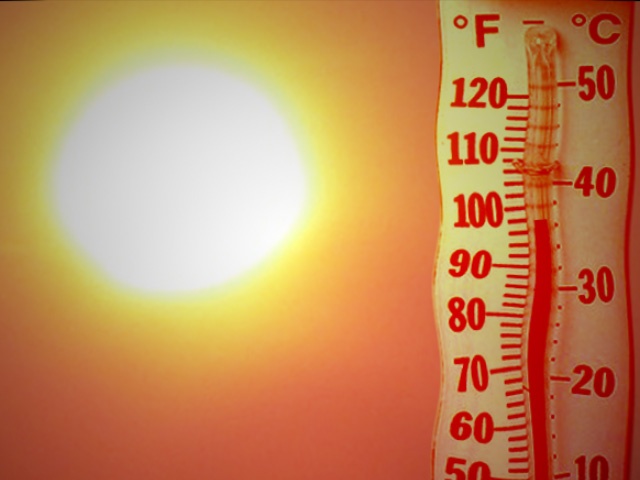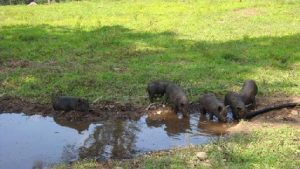Did You Know – Pigs Can’t Sweat?
Pigs cannot sweat and therefore must have specific conditions met in order to cope with hot weather. They require:
-
- Shade
- Water
- Wallows
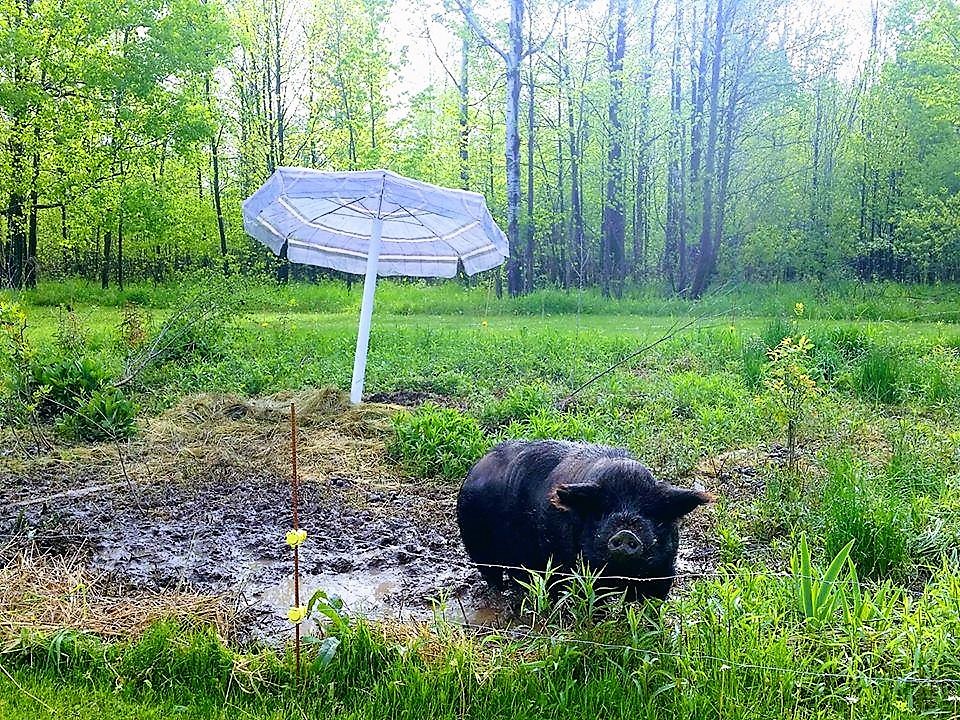
Signs of Heat Stress
-
- Reduced Appetite
- Lethargy
- Increased Respiration Rate – Heavy, Rapid Panting
- Body temperature above the normal 101-103 degree range.
preventing heat stress
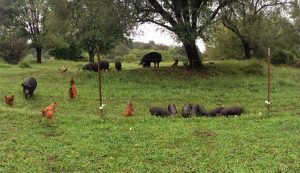 Tree canopies provide the very best shade and relief from the heat.
Tree canopies provide the very best shade and relief from the heat.
Shade – Shade is the key ingredient in keeping your hogs cool and comfortable in hot weather. The low-to-the-ground field huts that kept hogs warm and cozy during the winter season can become virtual ovens when temperatures rise.
Tree canopies provide the very best shade and relief from the heat and sun, but in their absence, try to provide high shade (well up off the ground) which will allow the heat to rise up and away from the hog’s body.
Choose materials/tarps which will reflect the heat rather than absorb it.
A pair of pigs whetting their whistles in an inexpensive kiddie pool. Photo courtesy of Grace Ridge Farms.
Water – Keep drinking water fresh, clean, and cool. Water can become quite hot in barrel/nipple set ups as the barrels tend to absorb heat from the sun.
 Try to add cool water to your hog’s wallow several times a day.
Try to add cool water to your hog’s wallow several times a day.
Wallows– a depression in the dirt filled with water. If a pond or wet spot is not available, the farmer merely hoses down a low spot in their pasture or pen, and the pig will do the work. Keep filling it as often as needed and the pigs will continue to “sculpt” the area, thus creating a perfect depression in which they can wallow to cool off and cover their skin with protective mud.
Adjust Feed Type and Feed Times – Digestion increases a hog’s body temperature and high fiber foods provide a greater temperature increase than fat and protein. Growing hogs also have a much higher lysine requirement during times of heat stress. Also, as the body temperature rises, intestinal immunity is compromised, and hogs are more likely to develop secondary infections.
Therefore, it is best to adjust feed and feeding times as follows:
- Avoid feeding during warmest part of the day (10:00 a.m. to 4:00 p.m.).
- Feed several small meals rather that one large meal.
- Increase fats, protein, lysine, and other antioxidants in the diet by offering fruits, seeds, eggs, and dairy products.
How to Cool Down an Overheated Pig
It is not advisable to hose down a hot pig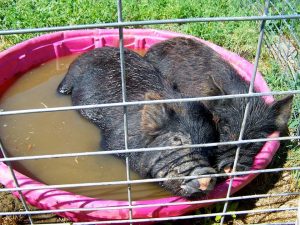 with cold water; this can cause shock.
with cold water; this can cause shock.
If a pig is over heated,
- Get them into the shade.
- Make sure they have water available.
- Cool down their feet first by providing them with some water to walk in or by hosing their feet.
- Their bodies can be sprinkled or sponged with tepid water.
- Once their bodies are wet, a fan can provide evaporative cooling.

